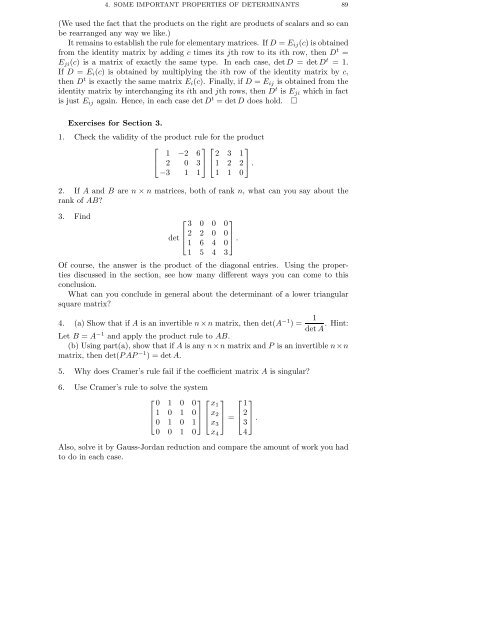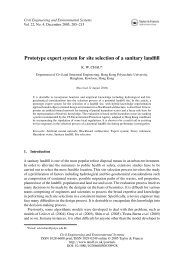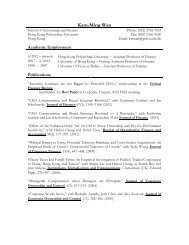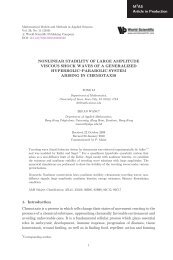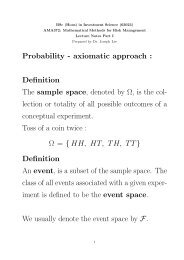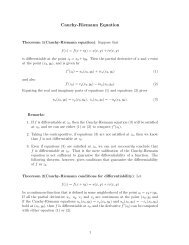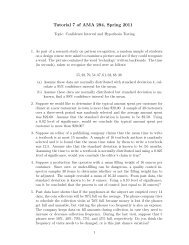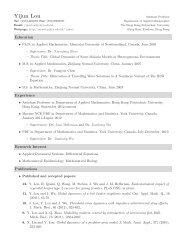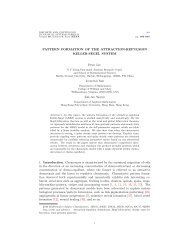DETERMINANTS AND EIGENVALUES 1. Introduction Gauss ...
DETERMINANTS AND EIGENVALUES 1. Introduction Gauss ...
DETERMINANTS AND EIGENVALUES 1. Introduction Gauss ...
You also want an ePaper? Increase the reach of your titles
YUMPU automatically turns print PDFs into web optimized ePapers that Google loves.
4. SOME IMPORTANT PROPERTIES OF <strong>DETERMINANTS</strong> 89(We used the fact that the products on the right are products of scalars and so canbe rearranged any way we like.)It remains to establish the rule for elementary matrices. If D = E ij (c) is obtainedfrom the identity matrix by adding c times its jth row to its ith row, then D t =E ji (c) is a matrix of exactly the same type. In each case, det D = det D t =<strong>1.</strong>If D = E i (c) is obtained by multiplying the ith row of the identity matrix by c,then D t is exactly the same matrix E i (c). Finally, if D = E ij is obtained from theidentity matrix by interchanging its ith and jth rows, then D t is E ji which in factis just E ij again. Hence, in each case det D t = det D does hold. □Exercises for Section 3.<strong>1.</strong> Check the validity of the product rule for the product⎡⎣ 1 −2 6⎤⎡2 0 3⎦⎣ 2 3 1⎤1 2 2⎦.−3 1 1 1 1 02. If A and B are n × n matrices, both of rank n, what can you say about therank of AB?3. Find⎡⎤3 0 0 0⎢ 2 2 0 0⎥det ⎣⎦.1 6 4 01 5 4 3Of course, the answer is the product of the diagonal entries. Using the propertiesdiscussed in the section, see how many different ways you can come to thisconclusion.What can you conclude in general about the determinant of a lower triangularsquare matrix?4. (a) Show that if A is an invertible n × n matrix, then det(A −1 )= 1det A . Hint:Let B = A −1 and apply the product rule to AB.(b) Using part(a), show that if A is any n×n matrix and P is an invertible n×nmatrix, then det(PAP −1 ) = det A.5. Why does Cramer’s rule fail if the coefficient matrix A is singular?6. Use Cramer’s rule to solve the system⎡⎤⎡⎤ ⎡ ⎤0 1 0 0 x 1 1⎢ 1 0 1 0⎥⎢x 2 ⎥ ⎢2⎥⎣⎦⎣⎦ = ⎣ ⎦.0 1 0 1 x 3 30 0 1 0 x 4 4Also, solve it by <strong>Gauss</strong>-Jordan reduction and compare the amount of work you hadto do in each case.


